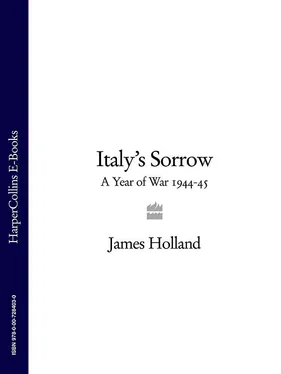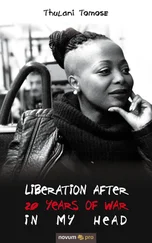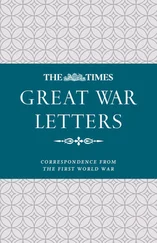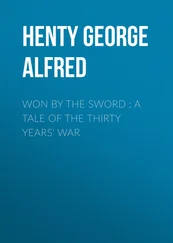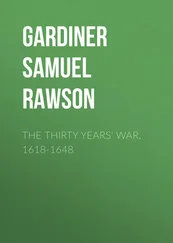Hitler’s reaction reached Beerlitz before Kesselring and Westphal’s return and so he rang Generaloberst von Mackensen at AOK 14 headquarters. Mälzer, Beerlitz and von Mackensen all recognised that the Führer’s demands were excessive, but they also realised that something drastic and urgent had to be done. Partisan actions in Rome had, until then, largely targeted Neo-Fascist Italians rather than Germans. Neither these nor earlier German casualties had prompted any form of reprisal, but there was a feeling now that anti-partisan measures had been too lenient. Moreover, the events of that afternoon seemed to signal a departure from previous partisan activities: this attack had been more violent and destructive, and it was close to the front line. A strong and speedy display of force was necessary. But what did von Mackensen consider was necessary? Beerlitz asked him. Mälzer had suggested shooting Italians at a ratio of 10:1; and now von Mackensen agreed, but stipulated that only those already sentenced to death and awaiting execution in prison should be proceeded against. Beerlitz duly reported this decision back to OKW in Berlin, who in turn presented the suggestion to Hitler.
When Kesselring finally reached his headquarters based at Monte Sorrate, a mountain north of the capital, he was quickly informed of the news and then spoke with SS Obersturmbannführer Herbert Kappler, the head of the Sicherheitsdienst (SD) – the SS intelligence service – in Rome, and asked him whether he had enough people awaiting execution to fill the ten to one criterion. Both Kesselring and Beerlitz, who was listening in, heard Kappler say that yes, he did have enough prisoners already condemned to death. The Field Marshal then received a call from the High Command in Berlin stating that Hitler definitely wanted ten Italians shot for every German killed that afternoon in Rome, and that that was a direct order. Later, some time between ten and eleven o’clock that night, Westphal spoke with General Jodl, Hitler’s Chief of Operations, in Berlin. Jodl repeated Hitler’s order, and stressed that the executions were to be carried out by the SD under Kappler’s supervision. ‘The Führer wishes that thorough action should be taken this time,’ Jodl told Westphal. ‘Tell that to your Feldmarschall .’1 The implication was clear: Kesselring’s Wehrmacht officers could not be trusted to carry out such a brutal reprisal. Soon after this conversation, Kesselring confirmed the order: ten Italians would be killed for every German soldier killed in the Via Rasella, and the executions were to be implemented immediately, within twenty-four hours.
The die had been cast.
The problem for Kappler was that despite his claim to the contrary, he did not have anything like 280 prisoners already awaiting execution and certainly not the 330 that were needed by the following afternoon. In fact, there were only three prisoners in the whole of Rome already sentenced to death. A looser classification was then hastily adopted: candidates would be drawn from those ‘worthy of death’, but this still only produced sixty-five Jews and a handful of known Communists. Other criminals were rounded up, as were men from the Italian armed forces who had been detained after the German occupation of Rome the previous September. During the day more were frantically added to the list, including a priest and a number of people detained by Neo-Fascist authorities on largely spurious charges.
The dazed and disorientated prisoners were taken in butchers’ lorries to the Ardeatine Caves, just south of the city near the ancient catacombs on the Appian Way. The first arrived shortly before 3.30 on the afternoon of Friday, 24 March. The men, in groups of five, were then taken deep into the dark caves, told to kneel and turn their heads to one side. They were then shot.
To begin with, the executions were carried out with some semblance of order, but as the bodies began to mount and the caves began to fill with corpses, discipline, made worse by the amount of drink the executioners had taken to help steel themselves for the task, began to waver. The firing grew wild; moreover most of the executioners were clerks rather than soldiers, and members of the SS and SD, who, like Kappler, had only limited military training. Nearly forty of those killed were completely decapitated by the wayward firing. Others were beaten to death. More still were not killed instantly and were left to die through suffocation and loss of blood. Somehow, an extra five men had been rounded up earlier that day. As witnesses to the executions they could not be spared, and so they too were shot, making the final tally of those slain that afternoon 335.
The massacre at the Ardeatine Caves was the first reprisal carried out by the Germans against the Italian people. It would not be their last; rather, it signalled the start of a policy to counteract partisan activity that was to cast a terrible shadow over Italy and which would fan the flames of a bloodbath that would last beyond the end of the war.
PART I CONTENTS List of Maps Note on the Text Principal Personalities Prologue Part I: The Road To Rome 1 The Eve of Battle: May 1944 2 Battle Begins: 11–12 May 1944 3 Churchill’s Opportunism 4 The Slow Retreat 5 Frustrations 6 Between the Devil and the Deep Blue Sea 7 Masters of the Skies 8 The Battle Rages: 13–16 May 1944 9 New Order 10 Breaking the Gustav Line: 17–18 May 1944 11 Achtung Banditen! 12 The Fog of War: 18–23 May 1944 13 Break-out: 23–26 May 1944 14 General Clark and the Big Switch: 26–30 May 1944 15 The Fall of Rome: 1–5 June 1944 Part II: The Brutal Summer 16 The North 17 The Problems of Generalship: June 1944 18 The Typhoon Rolls North 19 Breaking the Albert Line: 20–30 June 1944 20 The Politics of War 21 Differences of Opinion 22 Summer Heat: July 1944 23 Crossing the Arno: July–August 1944 24 A Change of Plan: August 1944 25 Despair: August 1944 26 The Gothic Line: 25 August–1 September 1944 27 The Tragedy of Gemmano: 1–12 September 1944 28 Mountain Passes and Bloody Ridges: 12–21 September 1944 Part III: The Winter of Discontent 29 Death in the Mountains: 22–29 September 1944 30 The Reason Why 31 Rain, Mud and Misery, Part I: 1–14 October 1944 32 Rain, Mud and Misery, Part II: 15–31 October 1944 33 The Infantryman’s Lot: November 1944 34 The Partisan Crisis: November–December 1944 35 White Christmas: December 1944 Part IV: Endgame 36 Stalemate: January–February 1945 37 Getting Ready: February–April 1945 38 The Last Offensive: 9–20 April 1945 39 The End of the War in Italy: 21 April–2 May 1945 Postscript References Bibliography Acknowledgements Abbreviations and Glossary Guide to ranks Index ITALY’S SORROW A Year of War, 1944–1945 JAMES HOLLAND Copyright ITALY’S SORROW A Year of War, 1944–1945 JAMES HOLLAND About The Publisher
The Road to Rome CONTENTS List of Maps Note on the Text Principal Personalities Prologue Part I: The Road To Rome 1 The Eve of Battle: May 1944 2 Battle Begins: 11–12 May 1944 3 Churchill’s Opportunism 4 The Slow Retreat 5 Frustrations 6 Between the Devil and the Deep Blue Sea 7 Masters of the Skies 8 The Battle Rages: 13–16 May 1944 9 New Order 10 Breaking the Gustav Line: 17–18 May 1944 11 Achtung Banditen! 12 The Fog of War: 18–23 May 1944 13 Break-out: 23–26 May 1944 14 General Clark and the Big Switch: 26–30 May 1944 15 The Fall of Rome: 1–5 June 1944 Part II: The Brutal Summer 16 The North 17 The Problems of Generalship: June 1944 18 The Typhoon Rolls North 19 Breaking the Albert Line: 20–30 June 1944 20 The Politics of War 21 Differences of Opinion 22 Summer Heat: July 1944 23 Crossing the Arno: July–August 1944 24 A Change of Plan: August 1944 25 Despair: August 1944 26 The Gothic Line: 25 August–1 September 1944 27 The Tragedy of Gemmano: 1–12 September 1944 28 Mountain Passes and Bloody Ridges: 12–21 September 1944 Part III: The Winter of Discontent 29 Death in the Mountains: 22–29 September 1944 30 The Reason Why 31 Rain, Mud and Misery, Part I: 1–14 October 1944 32 Rain, Mud and Misery, Part II: 15–31 October 1944 33 The Infantryman’s Lot: November 1944 34 The Partisan Crisis: November–December 1944 35 White Christmas: December 1944 Part IV: Endgame 36 Stalemate: January–February 1945 37 Getting Ready: February–April 1945 38 The Last Offensive: 9–20 April 1945 39 The End of the War in Italy: 21 April–2 May 1945 Postscript References Bibliography Acknowledgements Abbreviations and Glossary Guide to ranks Index ITALY’S SORROW A Year of War, 1944–1945 JAMES HOLLAND Copyright ITALY’S SORROW A Year of War, 1944–1945 JAMES HOLLAND About The Publisher
ONE CONTENTS List of Maps Note on the Text Principal Personalities Prologue Part I: The Road To Rome 1 The Eve of Battle: May 1944 2 Battle Begins: 11–12 May 1944 3 Churchill’s Opportunism 4 The Slow Retreat 5 Frustrations 6 Between the Devil and the Deep Blue Sea 7 Masters of the Skies 8 The Battle Rages: 13–16 May 1944 9 New Order 10 Breaking the Gustav Line: 17–18 May 1944 11 Achtung Banditen! 12 The Fog of War: 18–23 May 1944 13 Break-out: 23–26 May 1944 14 General Clark and the Big Switch: 26–30 May 1944 15 The Fall of Rome: 1–5 June 1944 Part II: The Brutal Summer 16 The North 17 The Problems of Generalship: June 1944 18 The Typhoon Rolls North 19 Breaking the Albert Line: 20–30 June 1944 20 The Politics of War 21 Differences of Opinion 22 Summer Heat: July 1944 23 Crossing the Arno: July–August 1944 24 A Change of Plan: August 1944 25 Despair: August 1944 26 The Gothic Line: 25 August–1 September 1944 27 The Tragedy of Gemmano: 1–12 September 1944 28 Mountain Passes and Bloody Ridges: 12–21 September 1944 Part III: The Winter of Discontent 29 Death in the Mountains: 22–29 September 1944 30 The Reason Why 31 Rain, Mud and Misery, Part I: 1–14 October 1944 32 Rain, Mud and Misery, Part II: 15–31 October 1944 33 The Infantryman’s Lot: November 1944 34 The Partisan Crisis: November–December 1944 35 White Christmas: December 1944 Part IV: Endgame 36 Stalemate: January–February 1945 37 Getting Ready: February–April 1945 38 The Last Offensive: 9–20 April 1945 39 The End of the War in Italy: 21 April–2 May 1945 Postscript References Bibliography Acknowledgements Abbreviations and Glossary Guide to ranks Index ITALY’S SORROW A Year of War, 1944–1945 JAMES HOLLAND Copyright ITALY’S SORROW A Year of War, 1944–1945 JAMES HOLLAND About The Publisher
Читать дальше
